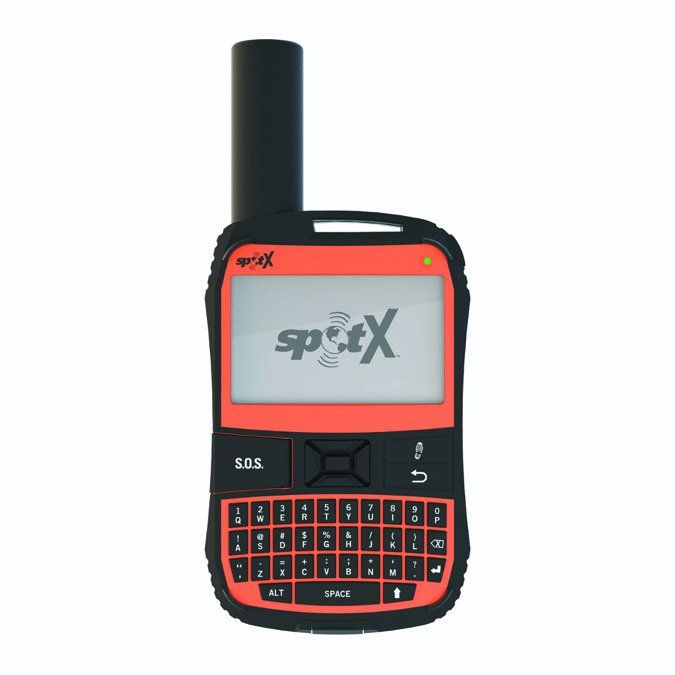Thanks to the internet and cellular telephone networks, ground communication services have become an expected component of preflight briefings, the filing of flight plans and for staying connected in the cabin. Within urban areas, telecommunications networks are as ubiquitous as water, although we accept that performance is limited by altitude.
But the reality is entirely different when flying in remote regions of North America, where coverage is patchy and broadband networks are akin to drinking through a straw.
Portable satellite communicators attempt to fill these gaps and the latest two-way comm is the $250 SpotX, positioned to compete with Garmins InReach Mini, which we reviewed in the July 2018 Aviation Consumer. Heres a field report on the SpotX.
The Network, Hardware
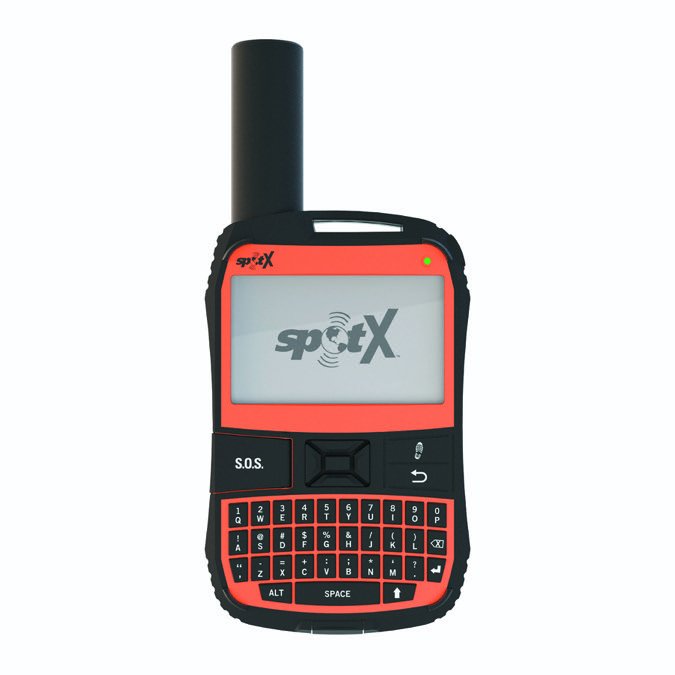
Low Earth Orbit (LEO) satellite constellations (Globalstar, for the Spot products) complement ground-based systems and in many locations provide the only available service. Accessible from most parts of the planet, Globalstars LEO network provides ubiquitous communicationsdata, voice and internet servicesalthough at much slower speeds than traditional terrestrial networks. GPS positioning and a ground station network connect the signal to the device.
The current-gen Globalstar LEO system typically provides for 1 Mbps connectivity, which works for voice calls (typically at 90 Kbps), plus text messaging and short emails without attachments. Dont expect bandwidth-intensive apps, including weather graphics, to work we’ll via satellite. But portable messengers can work we’ll for search and rescue purposes, which includes SOS.
Spot boasts that its communicators (first released in 2007) are responsible for over 6000 savesover 3000 in the U.S.
Designed for the outdoors, the device is waterproof, shockproof, sports a sunlight-readable 2.7-inch (non-touch) screen and weighs 7 ounces. The keyboard is backlit and I found it easy to type withimportant in the airplane or anywhere.
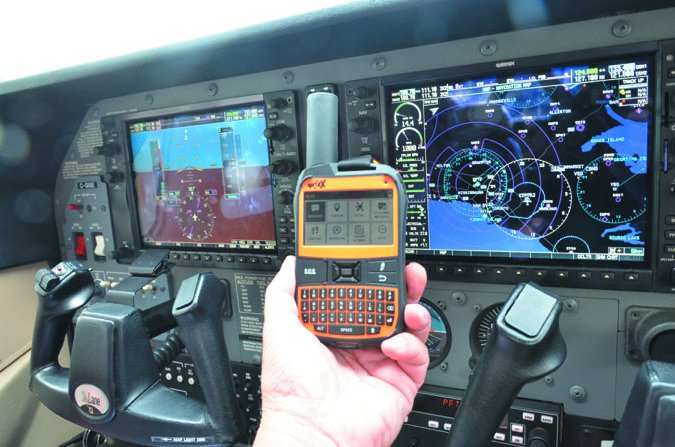
SpotX is powered by a rechargeable lithium polymer battery and includes a Micro-USB cable and AC/DC charger. A full charge can be achieved overnight. The hardware is designed to operate in temperatures from -4F to +140F (-20C to +60C) and conforms to the IP67 ruggedized hardware specifications. Its submersible up to 1 meter for 30 minutes.
The device has sufficient storage to hold up to 70 contacts and/or contact groups. A rocker style cursor pad (called the Directional Pad) allows the user to navigate between menu pages and make selections. The key in the center of the Directional Pad serves as the select key.
SpotX is assigned a telephone number for your appropriate country during activation. This allows contacts in the same country to send SMS messages to your SpotX without incurring any additional fees. There are four key components to the SpotX product: the SpotX hardware, its activation and service plan, its configuration through the website and the SpotX Device Updater application used to synchronize account information and update firmware. As weve learned from other satcomms, setup and activation can be a chore. For the SpotX, it begins with setting up an account on the FindMeSpot website from a Mac or PC, requiring a credit card for payment and information about your hardware.
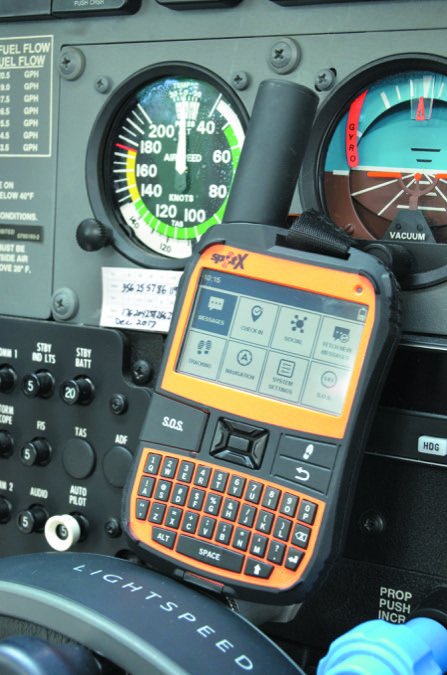
With your account set up or logged into, three steps are required. The first is setting the serial number and authorization code of the SpotX hardware and a device name. The second stepan important oneis selecting the country because that determines the mobile telephone number of the device. The nuance is additional charges may apply when texting from your SpotX to international telephone numbers (like sending a message from your U.S.-registered SpotX to a French mobile device). Finally, select a service plan and payment information.
Once the activation process is completed, the system will take you to the My Devices page on the website. The users and quick-start guides can be downloaded from this page. This page will also indicate the last time the hardware was synchronized and whether there is a firmware update required for your hardware. Its important to keep it updated. Another important step is adding your contacts (and groups), SOS and Check In outgoing messages and contacts.
Spotx Feature Set
The devices menu structure is uncluttered and simple. At the top of the screen is a status bar where a number of icons are displayed, including the tracking mode, the current system time, the number of messages waiting to be sent, satellite connection and a battery indicator. The status bar also is a handy way to determine if your message has been sent.
The main screen includes the Message, Check In, Social (social networking), Fetching New Messages, Tracking, Navigation, System Settings and SOS menu icons.
The Check In selection sends an SMS text or email to a list of contacts. The contents of the message and the SMS/email lists are controlled through your web account. Once the email or SMS is received by the recipient, they can simply open the email and click a link to either the FindMeSpot map page (powered by Google Maps) or directly to Google Maps.
When SpotX is powered up, tracking is disabled by default. The Tracking menu displays the current tracking interval, allows the interval to be changed and turns tracking on and off. A higher tracking interval (2.5 minutes versus 60 minutes, for example) will use more battery (and has a higher monthly fee). It will run for 10 days in the 10-minute tracking interval mode.
I have found that placing my SpotX on the glareshield of the aircraft presents a clear view of the sky to the device. Spot recommends that the device be placed at least 12 inches from a GPS navigator and I have yet to experience adverse interference with the GPS navigators in my aircrafta G1000-equipped Cessna Skylane.
On a side note, another user reports that the SpotX was unusable in his Aviat Husky, which is a fabric airframe equipped with a Garmin navigator and an ADS-B transponder. After confirming the SpotX was the source of the GPS signal problems, he replaced the SpotX with a Garmin InReach, which works fine in the Husky.
To send a message, simply select the Messages icon (using the cursor) and press Enter. The page has five menu options: Message (to compose), Contacts, Predefined, Fetch Rate and Cancel Messages. Selecting Messages will display a list of all messages (both SMS and email) that were sent and received. To compose a new message, scroll down to the bottom right hand of the page and select the Pen icon. This will take you into the message composition page. “To” is highlighted and using the button in the middle of the Directional Pad opens the Select Contact page or you can scroll over to the Contacts icon on the far right of the screen. Use the Directional Pad to scroll down to select a contact and the press the middle key to select the contact. The contacts email address or SMS address will be displayed as separate contacts in the list. Once contacts are selected, scroll down to Message, which will navigate you to the New Message screen, and begin typing your message. Various fonts can be selected, including bold and italics, to highlight your message. A message may be up to 140 characters. The Send Message icon (lower right of the screen) is used to send the typed message. Remember, the display is not a touchscreenall cursor movements are controlled by the Directional Pad.
Smart SOS
SpotX will drop electronic breadcrumbs (EB) along your route of flight with a drop resolution of 2.5, 5, 10, 30 or 60 minutes, depending upon the service plan and when tracking is enabled. For pilots flying on a VFR flight plan or itinerary, EBs provide a time-efficient technique for Search and Rescue (SAR) teams to execute a search in the event of an overdue aircraft. You can provide access to Leidos Flight Service (formerly Lockheed) through embedding the SpotX Share locations into your flight plan.
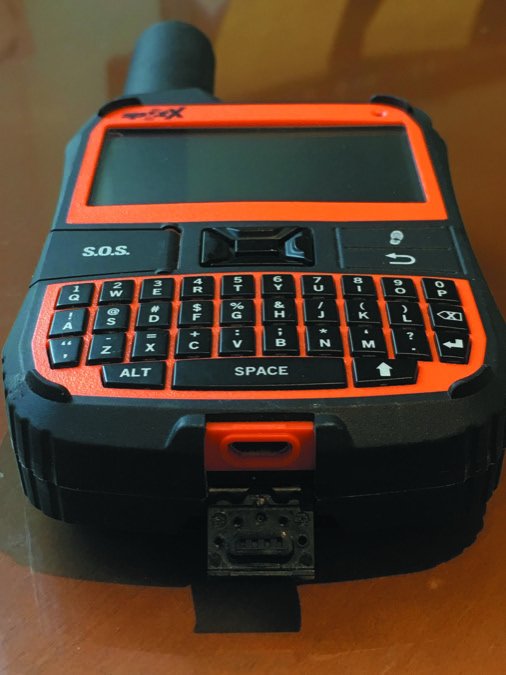
The initiation of a rescue begins with pressing the SOS button, which is behind a protective cover prominently marked “SOS,” or through the SOS icon on the main screen. Once activated, the SOS icon will be displayed on the status bar and the SOS notification message will be sent every 2.5 minutes until it is acknowledged. SOS may be canceled one of three ways: powering off the device, pressing the SOS bezel key for three seconds and following the onscreen instructions or by selecting the Cancel SOS command.
The SpotX sends a notification with the devices GPS coordinates to the GEOS worldwide monitoring center (www.geosworldwide.com). GEOS provides SOS monitoring and emergency dispatch through its dedicated International Emergency Response Coordination Centre (IERCC) based in Houston, Texas. The IERCC is staffed 24/7 with trained personnel who have access to first responders. The average response time from the receipt of your SOS message until referring an emergency responder is 11 minutes. You may be liable for additional charges if you send a false SOS message. In countries where search and rescue services are provided on a fee basis, you can upgrade to the GEOS Member Benefit for reimbursement of up to $100,000 in SAR expenses at an annual cost of $24.99.
Once an SOS message has been received, the IERCC calls your emergency contact(s) to determine if it is a false alarm. It locates and notifies an emergency responder and then maintains an open line of communication, including providing updates of your location. The IERCC will also keep your emergency contact(s) informed. SAR leaders believe that when stranded in remote regions, two-way communications contribute to a positive state of mind, which improves survival outcomes.
Tracking resolution is an important factor in reducing the size of the search area. From an SAR point of view, 2.5-minute tracking resolution can help reduce the search area. With GPS-derived latitude/longitude included in the tracking messages and SOS message, the search area can be narrowed. Pinpointing the devices last known location will be based upon the specifics of the terrain, for example in an open field versus under a forests canopy.
The SOS message may be customized from your online internet account and will be sent to the IERCC. There’s also a service for non-life-threatening situations, and Spot has partnered with the NSD Motor Club for 24/7 vehicle/motorcycle services. Its available in the U.S. and Canada and is $30 per year. Working alongside the SpotX device is the Spot app for iOS and Android smartphones and tablets. The app displays georeferenced breadcrumbs superimposed onto a Google map. The app allows filtering to display your breadcrumb track of a specific flight and I found it to be a handy application for others to see your flights.
Conclusion
So far Ive used the SpotX for more than 30 hours and find the website, updater application and the SpotX device itself easy to use. The hardware is robust and the display is easy to read in direct sunlight, while sending and receiving messages in the airplane is simpleclick, type and send.
Basic monthly subscription fees start at $11.95 with a 12-month commitment and allow for 20 total messages. Unlimited messages with no commitment (Flex) is $39.95. Visit www.findmespot.com for a complete fee structure.
Satcomm fees arent cheap, but like the SpotX, could be worth it for those needing ubiquitous access to texts, email and SOS whether on the ground or at high altitudes, maintaining the cyber umbilical cord.
Contributor Phil Lightstone is a long-time IT and telecommunications professional and aviation author.

